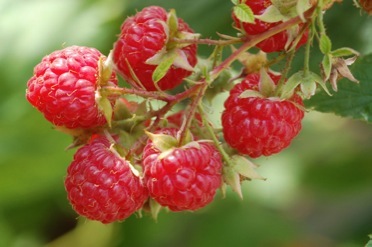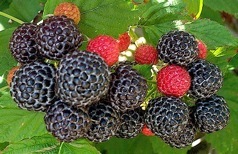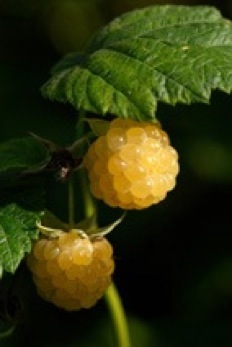Rubus ideaus: Delicate Raspberry
Raspberries were the first wild fruit I noticed on my own and ate as a kid.
They grew on a forested mesic hillside near a woods road. They looked like the kind I saw in the store so I ate them. No asking, no checking. I just ate them. Kids do that. In hindsight, how frightening.
Most plant poisonings among kids involve very young children. Toddlers of any species, be they two or four legged, will chew on something no matter how awful it tastes. Older children usually won’t eat foul tasting stuff, nor will older animals. Almost all the cases of child plant poisoning involve the very young eating something ornamental from their own yard, or the neighbor’s yard. Then you have to skip a decade before the “I dare you” poisonings crop up. In between you can teach good foraging rules and what to not do.
Raspberries and blackberries are so close they are incestuous cousins. The same thing can be said of Plums and Cherries. Despite the varieties of raspberries and blackberries, the easiest way to tell them apart is after you pick the berry. The raspberry will have a hole in it where the core and stem were and will leave a little cone on the branch. The blackberry will have a little stem where the raspberry has a hole. That little stem is usually slightly bitter. What the raspberry leaves behind is technically called a torus or receptacle. Raspberries are also hairy, whereas blackberries are not.
Like blackberries, raspberries fruit their second year and usually in mid-summer (in northern climates.) If you live in the right area and have two green thumbs you can coax them to fruit in one year, and indeed that is how some commercial production is done. Like the blackberry the raspberry’s leaves can be used for a tea and to treat minor cases of diarrhea. It is also suggested for regulating menses.
While the common wild raspberry is rouge they can range from black to yellow, depending on the culitvar. On average a raspberry weights four grams and is made up of 100 little drupelets. It is an “aggregate” fruit, or a collection of many little fruits, which gives it (and the blackberry) their familiar shape. They’ve been under cultivation since at least the 4th century BC.
As one might expect from a member of the rose family, the raspberry is a nutritional powerhouse. They are very high in Vitamin C, fiber, potassium, Vitamin A and calcium. They are chocked full of antioxidants and very good for treating eye diseases.
Botanically they are in the Rubus genus, said ROU-bus which is Latin for red hair. There are some 200 species of raspberry, R. Idaeus (eye-DAY-ee-us, from Mount Ida) is the wild red one, Occidentalis (ok-sih-den-TAY-liss, of the west) is a black wild one. They are native only to the northern hemisphere.
Where the word “rasp” comes come is debatable but it seems to be related to “raspis” first in English in 1532 from Old French raspeit/raspise and Italian raspato, meaning red wine from Medieval Latin raspatum or raspa meaning a bunch of grapes. Perhaps that and the Greek word for a grape, rouga, had a similar linguistic ancestor.
Oh, when raspberries ripen the reds ripen first, then black, next purple (a cross between red and black) and lastly yellow.
Green Deane’s “Itemized” Plant Profile
IDENTIFICATION: Leaves alternate, pinnately compound leaf with 3 to 7 serrated leaflets, 5 to 8 inches long, green above and nearly white below, very fine prickles or glandular hairs on petiole. Flower: Greenish, with very small white petals that fall away quickly, not showy, appearing in late spring to early summer. Fruit: Juicy, red (or black) multiple of drupes, ripen in late summer. When picked they separate from the fleshy core forming a hollow shell. Twig: Arching “canes” 3-5 feet that are bristly hairy to slightly prickly and reddish green. Unlike blackberries canes do not root at the tips.
TIME OF YEAR: Depending on climate and variety, late spring to late summer, usually middle of summer, or two crops a year if husbanded correctly.
ENVIRONMENT: Full sun, neither too wet or too dry, mesic conditions. Found throughout North America except the Deep South.
METHOD OF PREPARATION: Numerous:; Fresh, frozen, canned, used as wine, ice cream, juice, pies, jelly, jam, tea, and best of all when eaten fresh on the trail.





